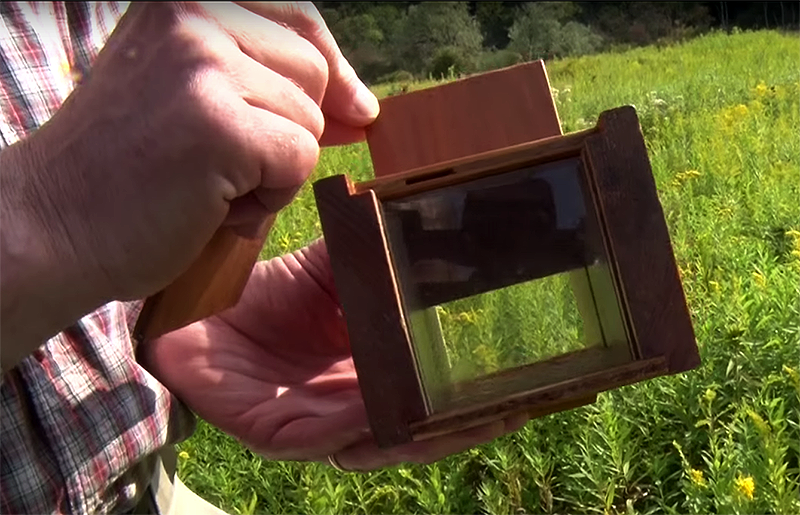
Bee hunting, also called “bee-lining,” was once common in North America. As early as the 1700s, people used bait, compasses and patient observation to locate wild honeybee nests.
“Part of it was for fun, but another part of it was to get honey,” explains Thomas Seeley, pictured above. Himself a bee hunter since the 1970s, Seeley is a professor of neurobiology and behavior at Cornell University. Seeley is also the author of Following the Wild Bees: The Craft and Science of Bee Hunting as well as The Lives of Bees: The Untold Story of the Honey Bee in the Wild.
He continues, “They would go bee hunting in July or August, and then they would find the tree, mark it with their initials and come back in October when the bees had made all the honey that they were going to make that summer.”
And then? Armed with axes and pots, they’d fell the bee tree to harvest the combs and every last drop of honey.
“That was standard operating procedure,” Seeley notes. “And that would be the end of the colony.”
Fortunately, today’s bee hunters are more charitable and differently motivated. Watching a video of Seeley find a wild beehive is like being in on a treasure hunt-cum-mindfulness meditation retreat.
“The thrill of bee hunting is in the chase,” he says. “It’s not so much in the final conclusion. That’s part of it, but the process of doing it and following the bees back to their home, whether it’s a bee tree or a hive, is fun.”
On the Hunt
Just what does the process look like? Seeley heads out with his bee box, along with some sweet bait, a sighting compass and a little paint. Once he finds some foraging honeybees, he traps them, one at a time, inside his bee box. The small, wooden box (shown below) has a hinged door on one side and a clear window on the other. It also features two chambers divided by a sliding panel.

Next, he sets up a small table and fills a square of honeycomb with nectar. He introduces his temporary captives to this food source and eventually releases them. Seeley uses color and anise scent to make his impromptu nectar station extra conspicuous for area bees. In time, his original captives return for more nectar. Seeley gently dots a few of these returning bees with different paint colors.

“If you’ve paint marked them, then they become individuals,” he says. “You really get to see the variety of, you might say, ‘personalities’ among individual worker bees.”

As the bees depart to unload their collected nectar, Seeley uses his sighting compass to record their vanishing bearings. He also times how long it takes individuals to make their round trips. Taken together, these details—coupled with years of practice—lead Seeley to the wild hive.

Bee Hunting Benefits
“One of the pleasures of [bee hunting] is that it takes you to some beautiful places you might not otherwise go, because you go wherever the bees are going,” Seeley says.
It’s also relaxing, he adds: “You have to focus your attention on what you’re doing as a hunter. You kind of tune out a lot of that other stuff in your life for a while.”
Understanding how honeybees live when they aren’t under human control is valuable, too. Seeley has spent much of his career studying these differences.
Wild vs. ‘Kept’ Bees
Like many present-day bee hunters, Seeley is also a beekeeper. “The colonies we manage for honey production and pollination are much bigger than in the wild,” he says.
What’s more, while beekeepers try to limit swarming and drone-rearing, wild honeybees swarm frequently. They also produce many drones, presumably to widen the gene pool. Exhibiting special genetic traits, wild honeybees more deftly manage parasites than their artificially hived counterparts. For instance, Seeley says, “Bees in the wild are very good at biting the legs off of varroa mites.”
Often situated high and deep within large trees, wild nests also are better protected from winter and honey robbers on four (as well as two) legs. But on the ground? “We [beekeepers] are interfering with the lives of the bees,” Seeley says. “I’m not saying we should copy the way bees live in the wild, but it’s good to be aware of how we’re pushing bees outside of their normal lifestyle.”
Seeley concludes, “In bee hunting, you’re not disturbing the bees. You’re actually giving them some nice food, and they’re as happy as clams at high tide to come back and get more food from you.”




